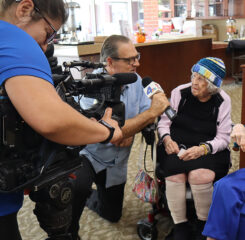Highlights of PRF Webinar on Phase 4 Supporting Documentation
Here are some key takeaways from that webinar, which was recorded and can be found on the HRSA PRF website here under Technical Assistance Webinars:
First, the supporting documentation that providers submit will be critical to ensuring they ultimately receive a Phase 4 payment. HRSA is going to first look at a provider’s application and compare it to the provider’s peers (e.g. nursing homes, or assisted living.) based upon the provider type selected. If revenue or expense numbers included in an application are outside an expected range or don’t appear to make sense, HRSA will look to the submitted supporting documentation to explain the anomaly. If the included supporting documentation explains those discrepancies or the anomalies, the application will continue through the process and likely receive a payment. If the supporting documentation doesn’t support the reported revenues/expenses, the application may receive no payment. Some providers may also receive a reduced payment if there is some documentation but not enough. HRSA noted all provider applicants must provide supporting documentation for:
· Field 15 – most recent tax return filing for the Tax Identification Number (TIN), which for non-profits will be their most recent Form 990. Alternatively government-owned or tribal entities that don’t need to submit tax returns will be expected to submit audited or internal financial statements;
· Field 19 –operating revenues and expenses from patient care documentation for Q3 and Q4 2020 and 2021 Q1, and
· Field 20 – operating revenues and expenses from patient care documentation for Q1, Q3 and Q4 2019!
If any one of these items is missing, the provider applicant will receive no payment. Some provider applicants will need to submit additional supporting documentation and HRSA reviewed 5 scenarios where this could happen. Members are encouraged to access the webinar to better understand these 5 scenarios.
The next tip is that applicants should double check that the numbers entered into their application match or can be explained by the supporting documentation. Similar to when math teachers tell their students to show their work, the supporting documentation is the applicant’s opportunity to connect the numbers reported to how they arrived at these numbers. This additional documentation may include a cover letter explaining that an acquisition or divestiture occurred in a particular quarter, or one may explain that the provider entity is held under a Trust and so the Applicant TIN is not the same as the TIN on the financial documents provided. There may also be other reasons to explain the connection between the data entered on the application and the financial information submitted to support this application. Applicants with more complex organizational structures in many cases may also need to submit the Annual Revenue from Patient Care Worksheet.
Finally, providers applying for Phase 4 should check out the array of HRSA resources to assist in understanding what the application is asking for.
· Fact Sheet for Complex Organizational Structures
· FAQs especially related to what is considered patient care revenue.
· Recordings of prior webinars can be accessed on this page under Technical Assistance webinars. LeadingAge expects the recording of the Oct. 13 webinar on supporting documentation to be posted here in the next 1-2 days.
For provider applicants who after reading this article now want to make some revisions to their application and/or supporting documentation, remember, even if you’ve already submitted your application, you can go back in and make updates/changes including supplementing your supporting documentation. This can be done up to the October 26, 11:59 p.m. ET deadline for submitting the application. HRSA has said it will use the most recent submission for its review. For questions, members can contact Nicole Fallon at LeadingAge.

Most Recommended
November 08, 2024
 HOTMA: New Rules for Housing
HOTMA: New Rules for Housing
November 06, 2024
 Colleagues on the Move, November 6, 2024
Colleagues on the Move, November 6, 2024
November 06, 2024
 Analysis: What Does the Final CY2025 Home Health Rule Include?
Analysis: What Does the Final CY2025 Home Health Rule Include?
October 29, 2024
Katie Smith Sloan Urges Members to Build a Movement, Take Action
Recently Added
December 10, 2024
4 Top Tech Themes from 2024
December 09, 2024
 Analysis: What’s Changing with the Home Health CAHPS Survey?
Analysis: What’s Changing with the Home Health CAHPS Survey?
December 09, 2024



